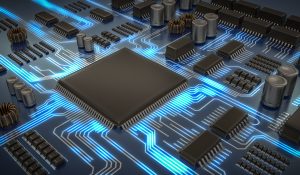 Over the last century, technology has advanced at an unprecedented rate, changing everything from manufacturing processes to how we communicate and interact with each other. The rapid pace at which electronics and computing technology has evolved has also changed the way technicians and engineers think about thermal management. Faster, smaller, and more powerful electronics emit more waste heat that must be properly managed. To keep up with these challenges, heat exchangers have evolved to provide the high-performance thermal management solutions needed to properly cool modern electronics.
Over the last century, technology has advanced at an unprecedented rate, changing everything from manufacturing processes to how we communicate and interact with each other. The rapid pace at which electronics and computing technology has evolved has also changed the way technicians and engineers think about thermal management. Faster, smaller, and more powerful electronics emit more waste heat that must be properly managed. To keep up with these challenges, heat exchangers have evolved to provide the high-performance thermal management solutions needed to properly cool modern electronics.
Higher Performance Equals Higher Energy Dissipation
Ever since technology began shrinking, contemporary thermal management had to evolve. No longer would large air conditioning units suffice to keep smaller machines and devices cooled. For instance, today, many electronics contain components that measure in the nanometers, and technology is poised to continue advancing to operate on even more miniscule planes. Despite their size, small electronics are exponentially more powerful than their predecessors, producing more waste heat across their systems.
Advanced Thermal Management for Modern Electronics
The good news about heat exchanger technology is that it can also be designed to fit into minimal spaces while providing efficient, high-performance thermal management. Instead of chilling electronic components, heat exchangers continuously transfer heat away from them, often within a closed loop system. They’re also highly efficient at transferring heat uniformly across surfaces of varying lengths and sizes, making them more versatile to meet the demands and challenges of modern electronics.
To learn more, call Noren Thermal, Inc. in Taylor, TX, today at 866-936-6736.







